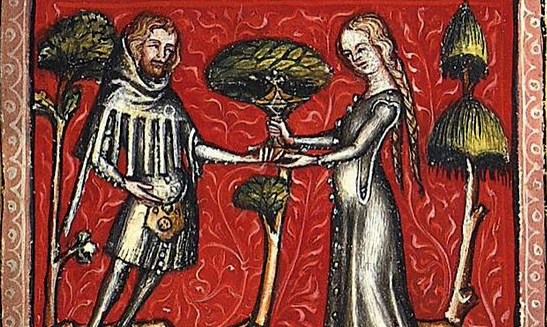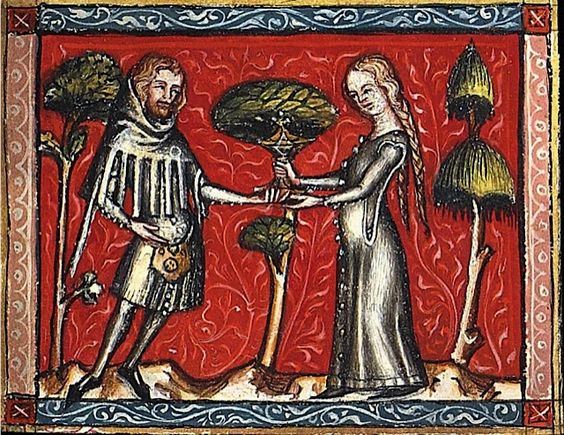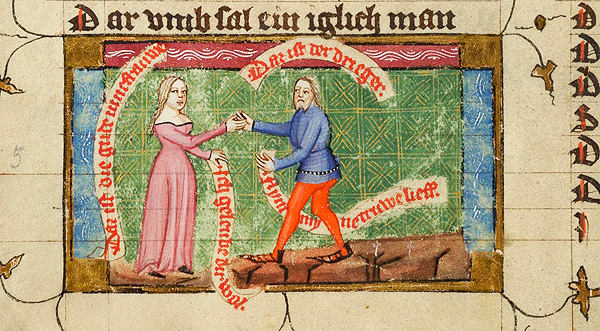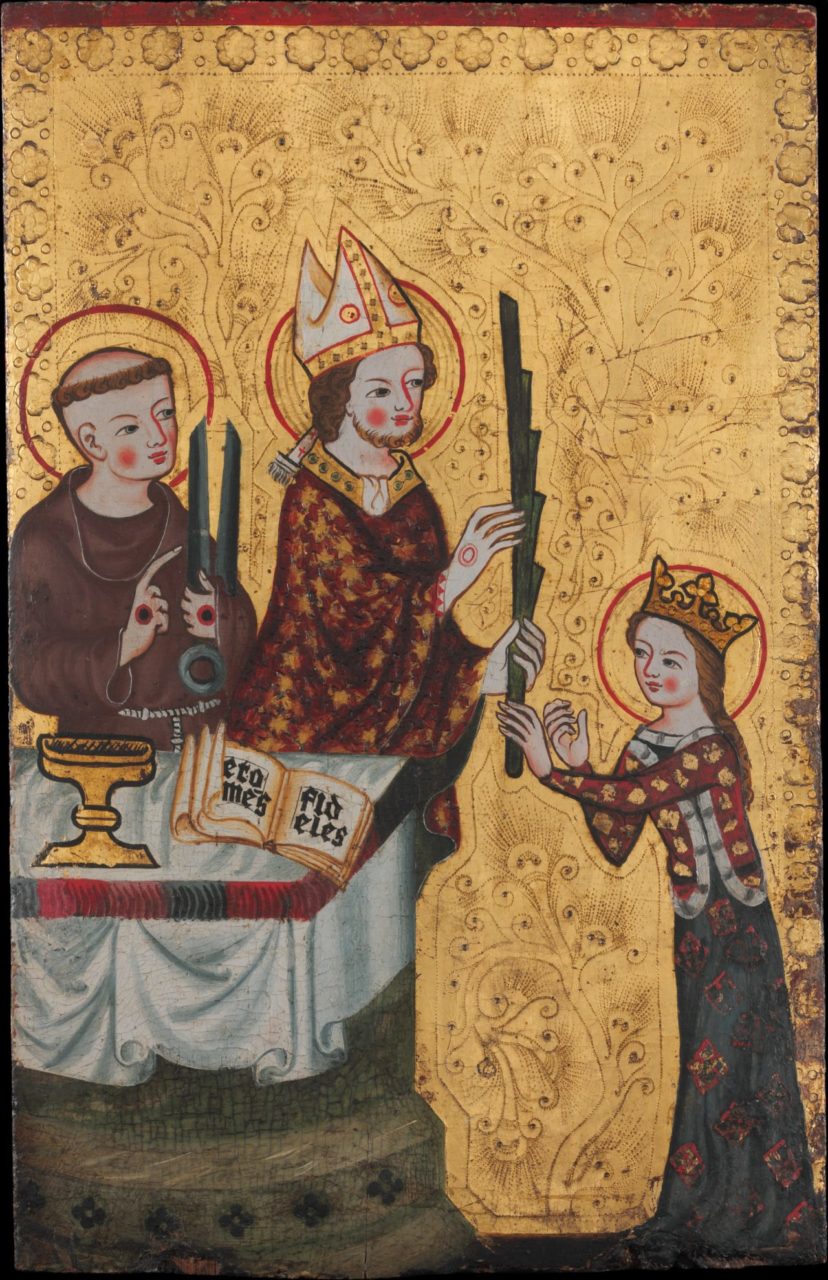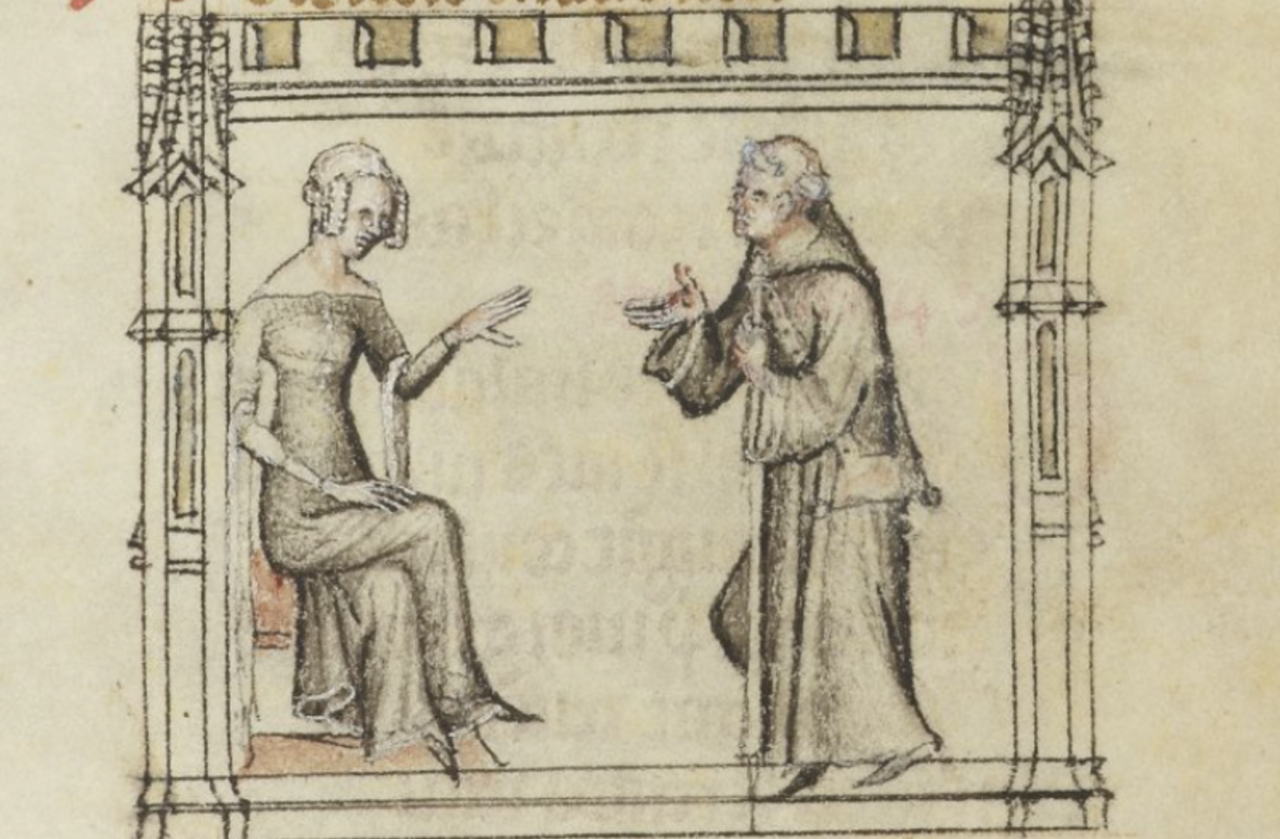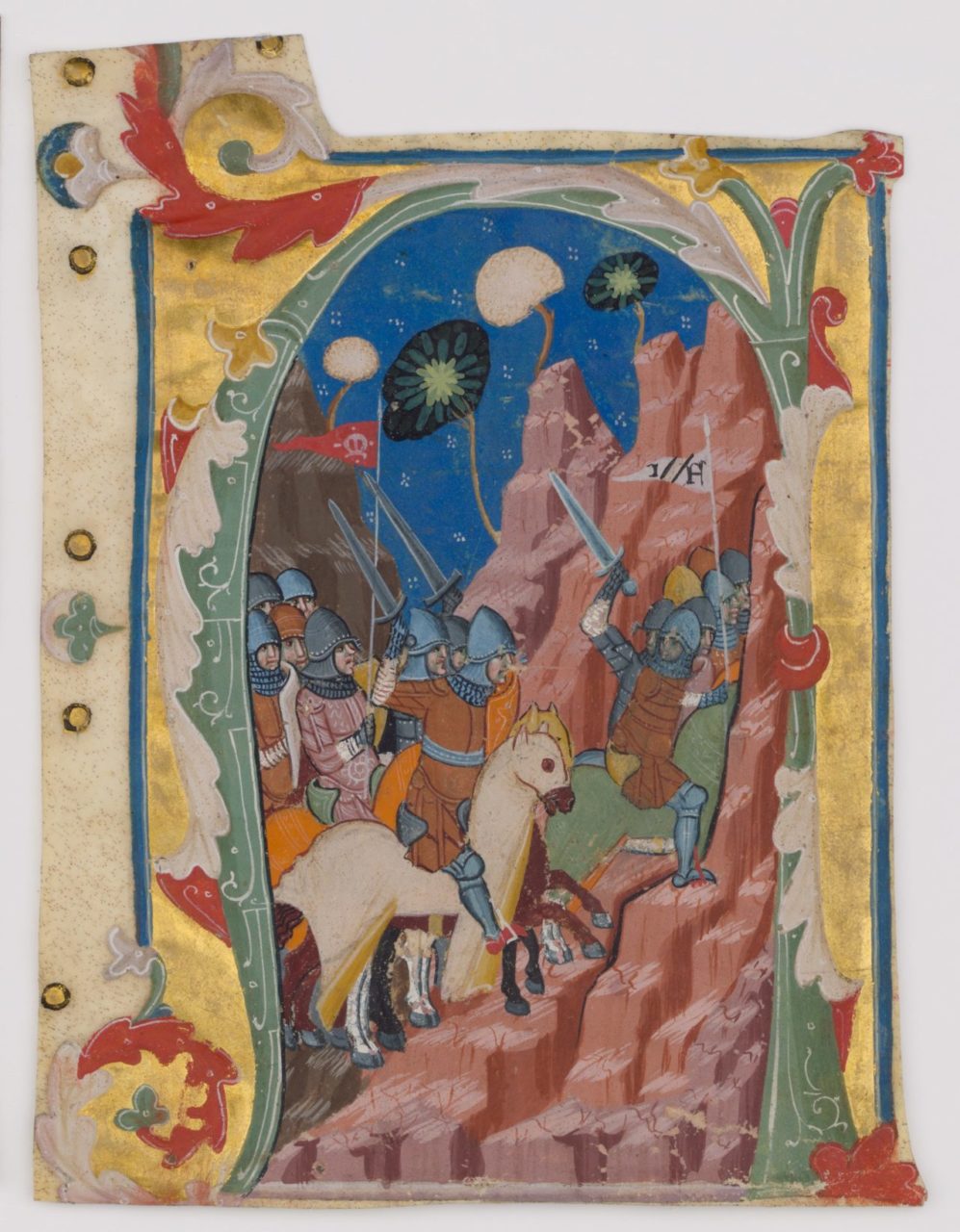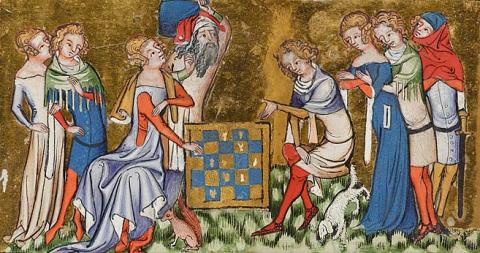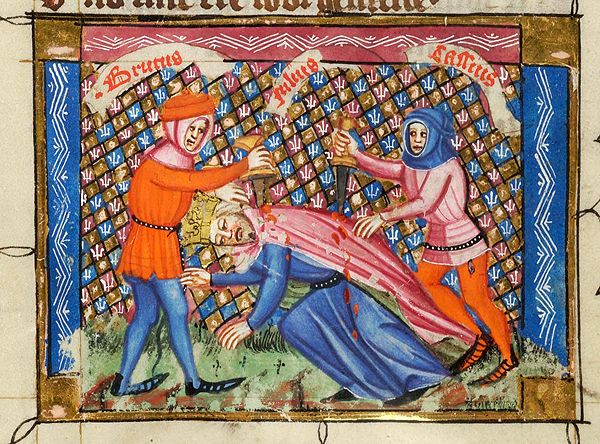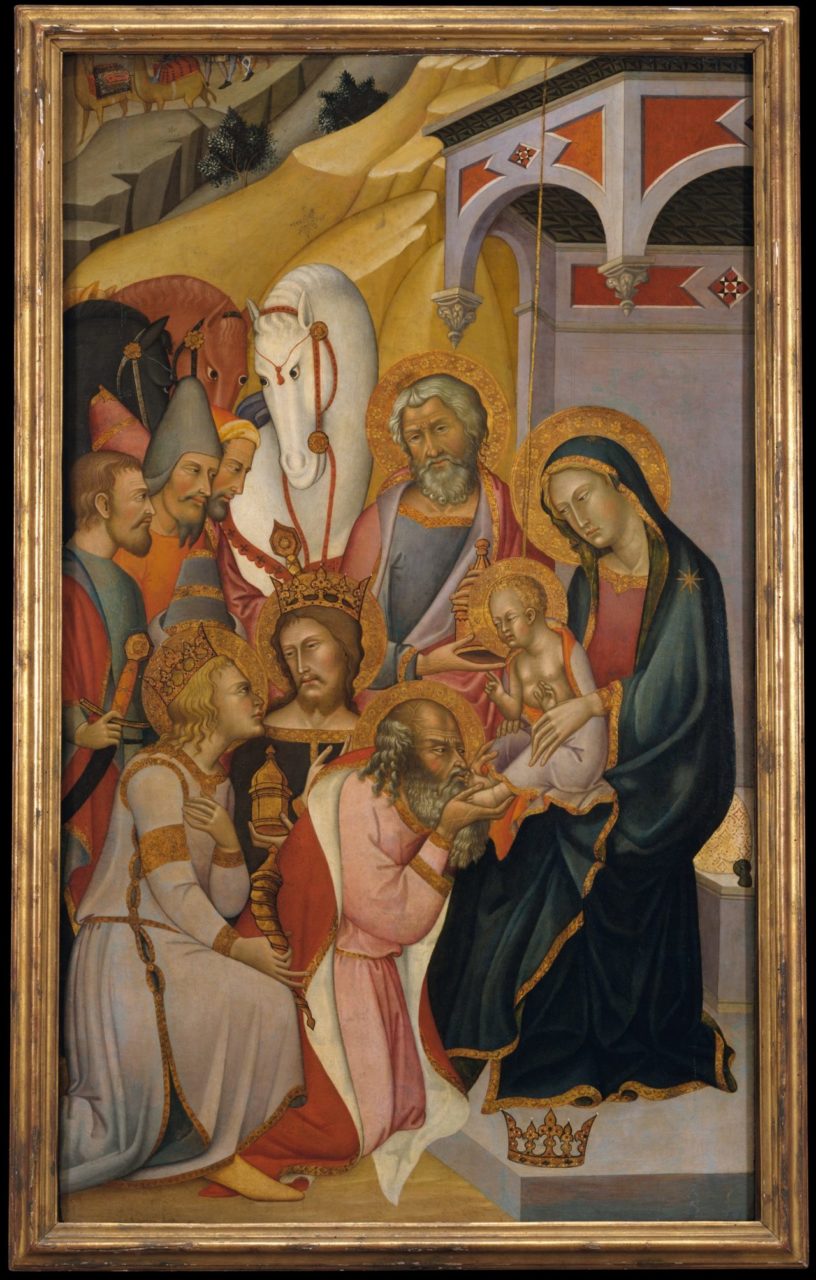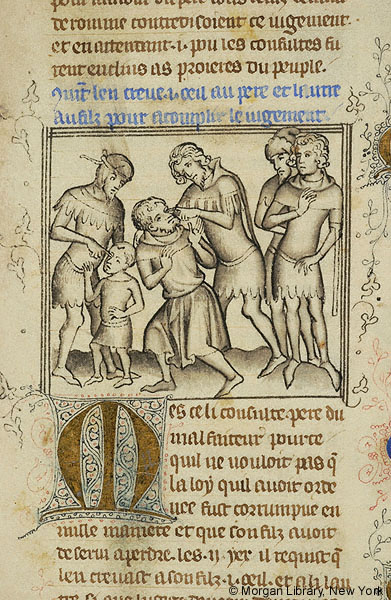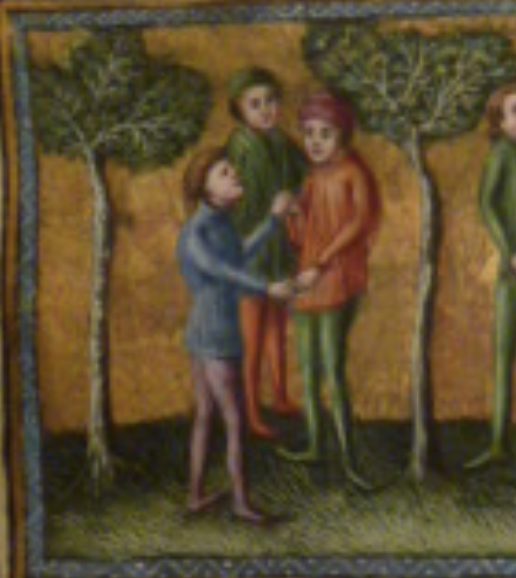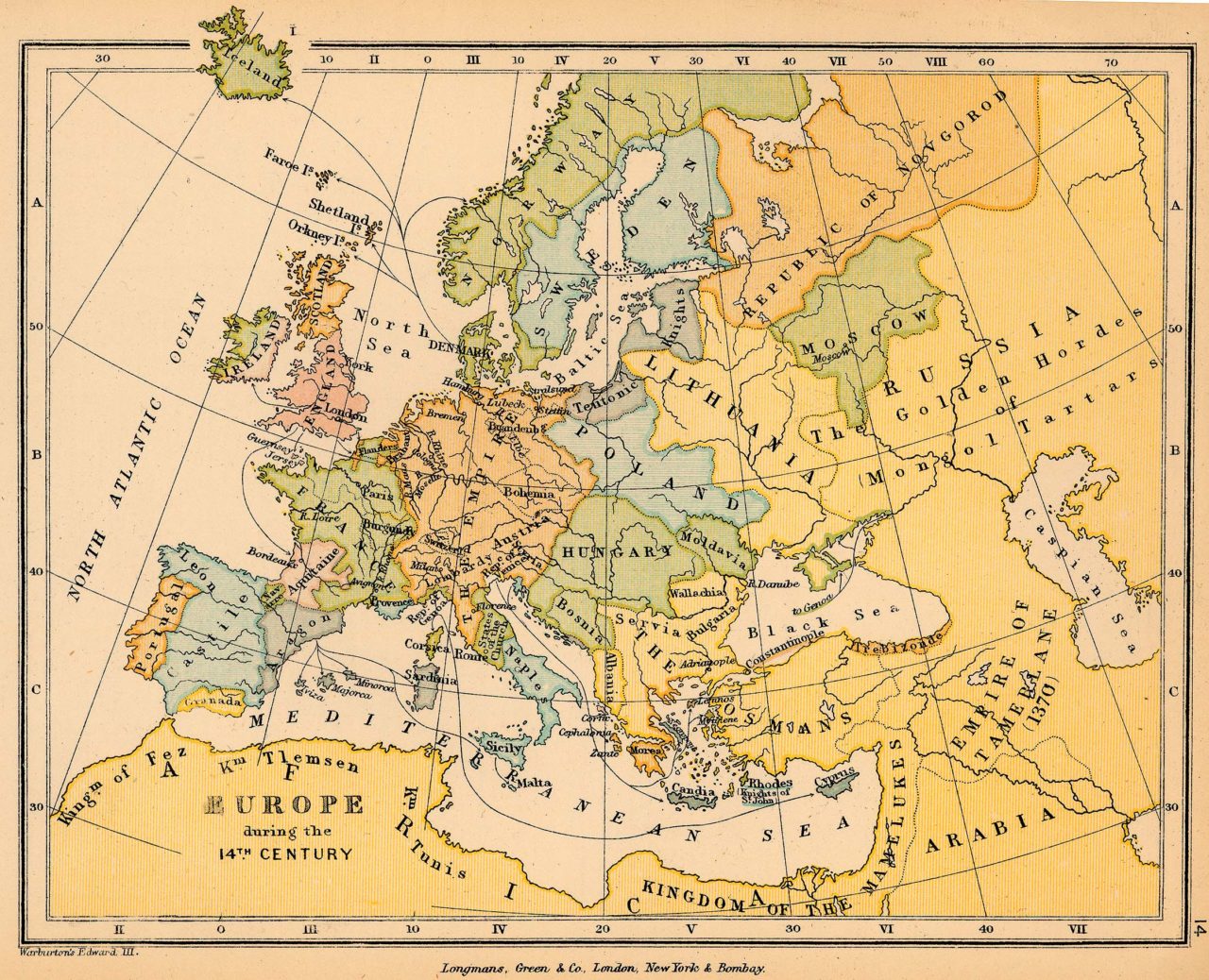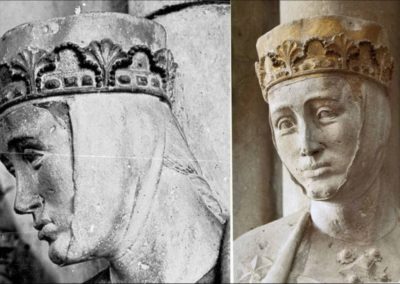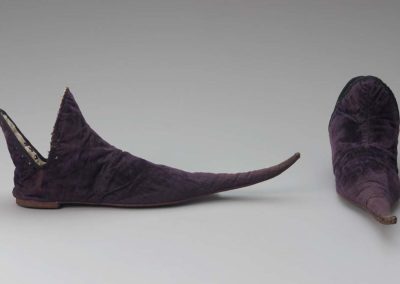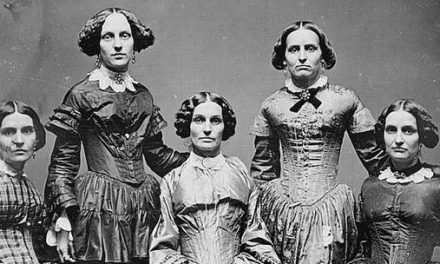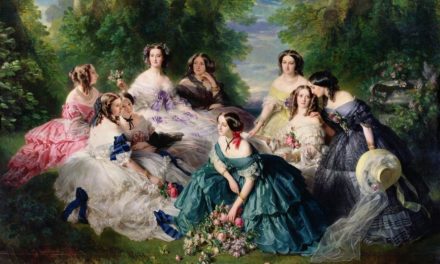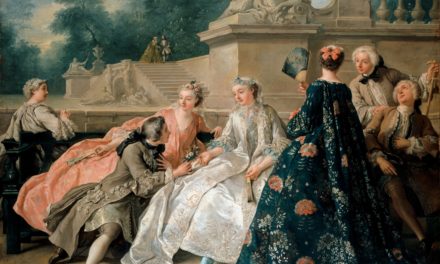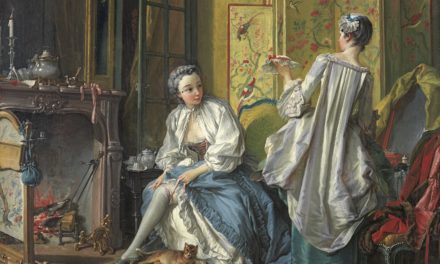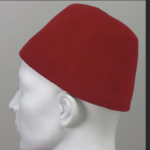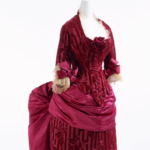1350-1399
Womenswear
“The innermost layer of a woman’s clothing was a linen or woolen chemise or smock, some fitting the figure and some loosely garmented, although there is some mention of a “breast girdle” or “breast band” which may have been the precursor of a modern bra.
Over the chemise, women wore a loose or fitted gown called a cotte or kirtle, usually ankle or floor-length, and with trains for formal occasions. Fitted kirtles had full skirts made by adding triangular gores to widen the hem without adding bulk at the waist. Kirtles also had long, fitted sleeves that sometimes reached down to cover the knuckles.
As one might imagine, a woman’s outfit was not complete without some kind of headwear. As with today, a medieval woman had many options- from straw hats, to hoods to elaborate headpieces. A woman’s activity and occasion would dictate what she wore on her head.”
Fig. 1 - Artist unknown. . Source: Pinterest
Fig. 2 - Thomasin von Zerclaere (Italian, 1186-1235). Der Wälsche Gast, 1380. Leaves, bound, vellum, ill; 352 x 252 mm cm (13.9 x 10 in). New York: The Morgan Library and Museum, MS G.54. Gift of the Trustees of the William S. Glazier Collection, 1984. Source: Pierpont Morgan Library Dept. of Medieval and Renaissance Manuscripts
Fig. 3 - Artist unknown. The Bishop of Assisi Giving a Palm to Saint Clare, ca. 1360. Tempera and gold on oak panel; 33.8 × 21.7 × 0.45 cm (13 5/16 × 8 9/16 × 3/16 in). New York: The Metropolitan Museum of Art, The Cloisters Collection, 1984.343. The Cloisters Collection, 1984. Source: The Metropolitan Museum of Art
Fig. 4 - Guillaume de Deguileville (French, ca. 1295-1358). Pilgrimage of Human Life, 1348. New York: The Morgan Library and Museum, MS M.772. Purchased, 1931. Source: The Morgan Library and Museum
Fashion Icon:
Menswear
“The innermost layer of clothing were the braies or breeches, a loose undergarment, usually made of linen, which was held up by a belt. Next came the shirt, which was generally also made of linen, and which was considered an undergarment, like the breeches.
An overgown, tunic, or kirtle was usually worn over the shirt or doublet. As with other outer garments, it was generally made of wool. Over this, a man might also wear an over-kirtle, cloak, or a hood. Servants and working men wore their kirtles at various lengths, including as low as the knee or calf. However the trend during the century was for hem-lengths to shorten for all classes.
During this century, the chaperon made a transformation from being a utilitarian hood with a small cape to becoming a complicated and fashionable hat worn by the wealthy in town settings. This came when they began to be worn with the opening for the face placed instead on the top of the head.”
Fig. 1 - Artist unknown. Initial A with the Battle of the Maccabees, ca. 1360–70. Tempera, gold, and ink on parchment; 20.4 x 15.1 cm (8 1/16 x 5 15/16 in). New York: The Metropolitan Museum of Art, 23.21.4. Gift of Bashford Dean, 1923. Source: The Metropolitan Museum of Art
Fig. 2 - Jacques de Longuyon (Belgian). Vows of the Peacock, ca. 1345–50. New York: The Morgan Library and Museum, MS G.24. Gift of the Trustees of the William S. Glazier Collection, 1984. Source: The Morgan Library and Museum
Fig. 3 - Thomasin von Zirclaere (Italian, ca. 1186-1235). Der Wälsche Gast, 1380. Leaves, bound, vellum, ill; 35.2 x 25.2 cm (13.0 x 9.9 in). New York: The Morgan Library and Museum, MS G.54. Gift of the Trustees of the William S. Glazier Collection, 1984.. Source: The Morgan Library and Musuem
CHILDREN’S WEAR
Fig. 1 - Bartolo di Fredi (Italian, 1353–1410). The Adoration of the Magi, ca. 1390. Tempera and gold on wood; 148.6 x 89.2 cm (58 1/2 x 35 1/8 in). New York: Metropolitan Museum of Art, 1975.1.16. Robert Lehman Collection, 1975. Source: Metropolitan Museum of Art
Fig. 2 - Jacobus de Cessolis (Italian, 1250-1322). Jeu des échecs moralisé, ca. 1350-1360. Leaves, bound, vellum, ill; 30.8 x 22.8 cm (12.12 x 8.9 in). New York: The Morgan Library and Museum, MS G.52. Gift of the Trustees of the William S. Glazier Collection, 1984. Source: The Morgan Library and Museum
Fig. 3 - Guillaume de Lorris (French, ca. 1200 –1240). Roman de la Rose, ca. 1390. Leaves, bound, vellum, ill; 28.7 x 21 cm (11.2 x 8.2 in). New York: The Morgan Library and Museum, MS G.32. Gift of the Trustees of the William S. Glazier Collection, 1984.. Source: The Morgan Library and Museum
References:
- “1300-1400 in European Fashion.” Wikipedia. Accessed November 30, 2017. https://en.wikipedia.org/wiki/1300–1400_in_European_fashion
Historical Context
Wikipedia:
Rulers:
- England
- Edward III (1327-1377)
- Richard II (1377-1399)
- France
- Philip VI (1328-1350)
- John II (1350-1364)
- Charles V (1364-1680)
- Charles VI (1380-1422)
- Spain
- Not a kingdom yet
Europe during the 14th Century. Source: GifeX
Events:
- 1350 – A fashion for mi-parti or parti-colored garments made of two contrasting fabrics, one on each side, emerges in the mid-14th century for men. The gown for men is abandoned and instead a tight top over the torso, with breeches or pants below, is worn.
- 1351 – Edward III of England establishes an embroidery workshop in the Tower of London.
- 1367 – King Richard II of England (reigned 1367-99) is credited with having invented the cloth handkerchief. The item “little pieces [of cloth] for the lord King to wipe and clean his nose,” appears in the Household Rolls (accounts)–the first documentation of their use.
- 1380 – Women’s shoulders are revealed for the first time in low-necked fitted dresses. Clerics and critics are predictably outraged. They also accuse women of padding their busts to give them a better appearance.
Timeline Entries
Primary/Period Sources
Resources for Fashion History Research
To discover primary/period sources, explore the categories below.
Have a primary source to suggest? Or a newly digitized periodical/book to announce? Contact us!
Digitized Primary/Period Sources
Secondary Sources
Also see the 14th-century overview page for more research sources… or browse our Zotero library.

